![]()
For six consecutive days, heavy rain had battered the hills surrounding Holmfirth, sending hundreds of tons of water streaming through the narrow gorges and several valleys down into the lowlands where it would be collected.
Normally, plenty of rainfall wouldn’t be a problem and in fact would benefit the many large mills and cottages that were dotted alongside the hillside whose businesses were reliant on fast flowing water, and in the summertime, the true benefit of having such large amounts of water would become apparent as, when any prolonged dry spells occurred, it would often render many operational businesses redundant due to the lack of rain.
To solve such issues, a group of businessmen and mill owners formed the Holmfirth Reservoir Commissioners, which would ultimately construct a series of reservoirs – one being the Bilberry Reservoir that was situated around three and-a-half miles above Holmfirth.
Built in 1840 and immense in size, Bilberry reservoir was between 500 and 600 yards long, roughly 120 yards broad, and from 50 to 60 feet deep, covering several acres of land and as one can imagine, it could hold several thousand cubic feet of water with the embankment withstanding immense pressure. During preparatory work, a small spring was uncovered and rather than a culvert being built to divert the water safely away, a decision was made to simply ‘plug’ the spring using nothing but clay and rubble with the assumption that the weight of the embankment above it would be sufficient enough to divert the flow of water elsewhere.
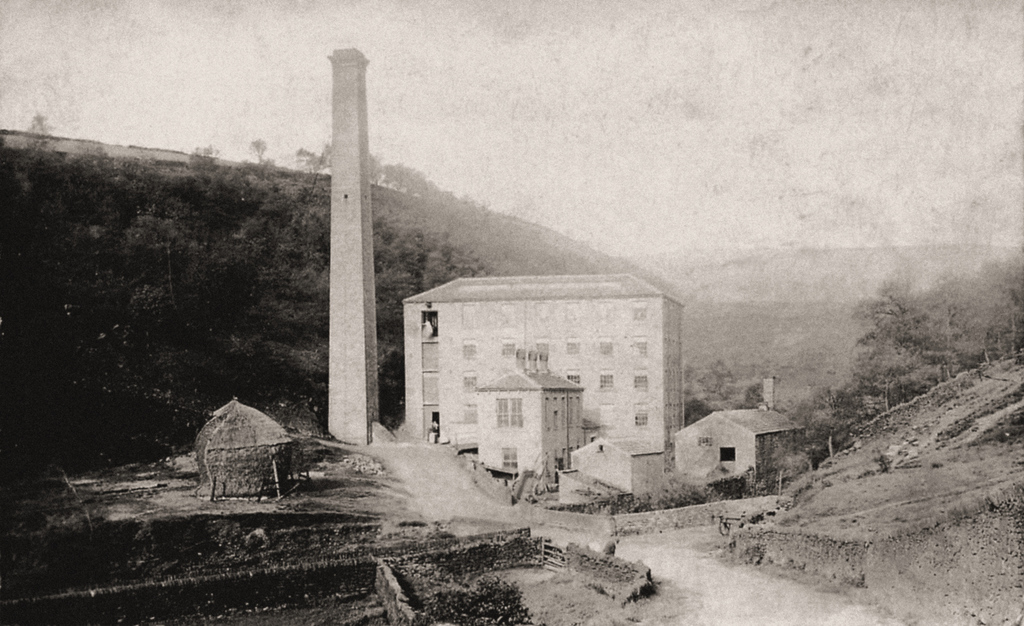
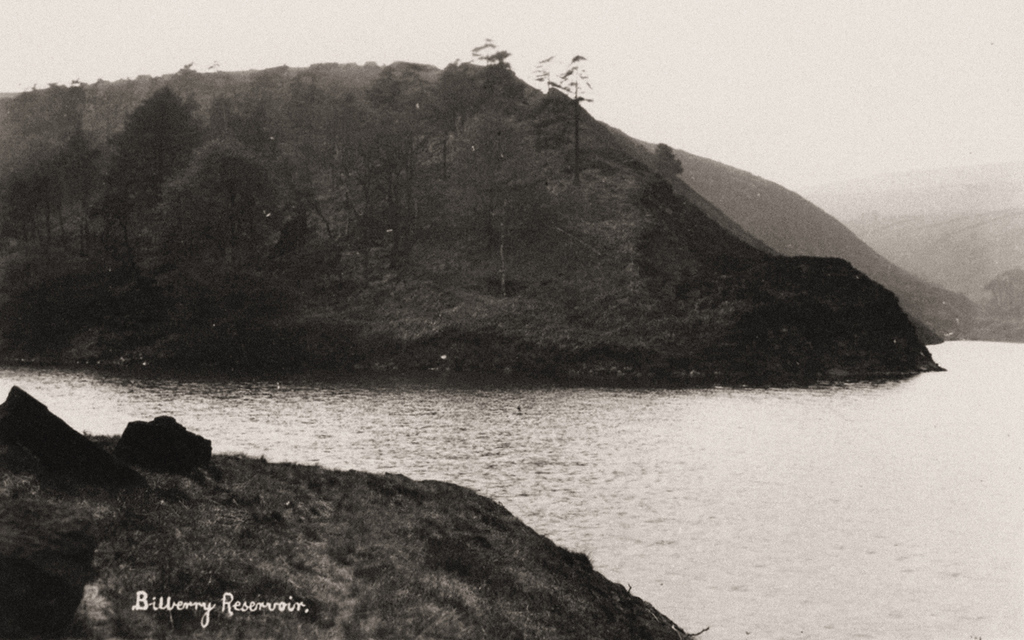
Unfortunately, during the early house of Thursday, October 5th, 1852 – the embankment, after withstanding days of severe rainfall, suddenly breached, sending an estimated 86 million gallons of water thundering down the Holme Valley, along the River Holme and towards the small picturesque town of Holmfirth, and the decision to plug the discovered spring would prove to be a fateful one.
The days leading up to February 5th had seen the water level in the Bilberry Reservoir continue to rise, and efforts to open the shuttle valves in the lower sections of the waste pipe began in earnest. It was hoped that by opening these valves, excess water would be allowed to drain through a tunnel under the reservoir and thus relieve the pressure from above.
On Wednesday, 4th February, the “swallow” or “safety-pit” where the excess flowed into, could no longer hold any more water, and by 10pm that evening, water had begun to flow over the embankment, joining the rivulets and streams further down below the valley. Some employees of the water board would make regular visits to the embankment, monitoring what was happening, and it would soon become apparent that the stability of the retaining wall was becoming weakened to an extent that something serious may occur.
And within an hour, at around one o’clock in the morning on Thursday, 5th February, the embankment finally gave way, allowing the accumulated waters from the reservoir to surge down and into the valley. The rain had finally ceased and the moon was shining in the night sky, but the irreversible nature of the incident would quickly bring about total destruction of many of the mills and cottages that were in the waters pathway. The River Holme, normally a relatively slow moving river, would quickly swell, and the torrent of water thundering its way along would easily sweep away many of the obstacles in front of it.
Holmfirth had a population of around six thousand, most of whom were in bed when the embankment burst, and the only warnings given were by a few watchers, or employees, who had begun to run into town as soon as they realised what was about to happen.
Shouting and screaming, some even threw stones towards bedroom windows to startle people from their sleep. But despite their best endeavors, it appears only those living closest to the reservoir would hear the warnings, whereas those further in the town wouldn’t have the opportunity to flee their homes in time.
The flood waters soon passed the beginning of Holmfirth, overtaking the ‘watchers’ and taking them with it towards their own impending death.
The rain was still falling heavily, and the scenes just minutes after the water had rushed into the town cannot be described in all its fulness. For example, the streets would soon be crowded with people, some still in their nightwear, who were rushing around in a state of frenzy, seeking their family members and friends – with some already mourning the loss of loved ones.
Mills that had once stood proud as a monument to the hard working people of the town now lay in ruins. Bilberry Mill, which had stood a few hundred yards below the reservoir, was completely destroyed, losing around 10 feet as well as its gable end. Digley Upper Mill was partially washed away, together with the all of the farm buildings that at the time had contained twelve tons of hay and plenty of livestock. Seven cottages nearby were swept away with the torrent, but fortunately the inmates of these cottages had somehow escaped with their lives.
Back-end Mill and all its machinery was almost wholly destroyed and Holme Bridge Church had lost its surrounding wall. The graveyard had become an almost unsightly spectacle, and the interior of the church was destroyed, with flood waters rising to almost five feet. The floor, covered in several inches of sand and mud, was torn up and pews were seen floating.
In the center of the aisle was laid the body of a goat that had been swept away from Upper Digley Mill; but more shockingly, the body of an infant was found resting on the seat of one of the pews; and on top of the stairs leading into the gallery lay the coffin and remains of a fully-grown man. These were not the only bodies to be discovered, as several others had been washed up from their graves by the whirlpools formed by the headlong current of water as it passed by the graveyard.
Further along, the devastation became much worse and with a considerable loss of life. Six houses along Water Street were completely destroyed, killing nearly all of those present within them.
One house within this neighborhood, whilst not destroyed by the onrushing water, was completely flooded in the basement which had contained sixteen individuals. Miraculously they all survived by escaping and making their way onto an adjoining roof.
Others were not so lucky. James Booth and his wife, along with a lodger, all drowned. As did Joseph Brook, his wife and their young child. Sadly, his wife would later be found still clutching her infant in her arms.
A nearby Wesleyan Chapel, just like Holme Bridge Church before it, was badly hit, losing part of the vestry and its interior being badly damaged.
It was reported that it only took around 15 minutes from the initial breach of the embankment to the flood waters entering Holmfirth and causing so much death and destruction, and something that had never been seen on such a large scale.
Heart wrenching scenes of people trying their hardest to rescue drowning people who were being tossed around in the strong currents soon became a common sight, with men and women reaching out trying to grab hold of those poor souls being taken away in an instant.
The devastation seemed to be never-ending, with stories of heroism and of course tragedy all soon becoming apparent, and the hours after the initial destruction many people would be seen searching for the bodies of the victims.
The areas damaged from the collape of the Bilberry reservoir would stretch over several miles, and whilst the effects of the power of the torrent would diminish the further it went, it could be easily traced over acres and acres of land. Bilberry Mill, as we have already mentioned, was the first to fall, followed by extensive damage to Middle Digley Mill and Lower Digley Mill. Luckily for both owners and the families of these mills, they had been alerted in time and had managed to escape from the torrent that would eventually take their livelihoods. But upwards of 100 people would ultimately be thrown out of their employment due to the destruction of both properties.
Other mills such as Bottom Mills, Victoria Woollen Mill, Dyson’s Woollen Mill, Farrar’s Upper Mill and Farrar’s Lower Mill would also suffer varying degrees of destruction. Some so badly damaged that broken machinery and furniture had barricaded the mills from the outside world.
Many streets had become impassable due to the mud, wreckage and larger pieces of timber and trees that had accumulated, and despite many volunteers offering their services to search for victims as well as begin the process of removing wreckage from the river, heavy rain during Saturday and Sunday would eventually prevent them from carrying on. But despite the many drawbacks, by early morning on Sunday, 8th February, around sixty-five bodies had been recovered and placed in public-houses in and around Holmfirth. Most had been identified except for three.
And as with any event of this magnitude, there seemed to be an influx of strangers to the town, who had arrived simply to gratify their own morbid curiosity by inspecting the route of devastation. But this also brought more problems to the area as it appears that light fingered men had arrived from various nearby districts to take advantage of the tragedy, pilfering what they could. In once example, five men were apprehended in Holmfirth and handcuffed before being sent to Huddersfield on the last train where they were then transported to the local police station.
The funerals of the victims commenced on Saturday, 7th February with 25 year old, Betty Earnshaw, being one of the first people to be buried. FIve more people were also interred, with the youngest being just one year old – that of Sarah Hannah Dodd.
On Sunday, 8th February many more victims would be interred, with services taking place in several locations within Holmfirth itself. Nine people where buried within the grounds of the Hinchcliffe Mill Wesleyan Methodist Chapel just off Woodhead Road. A further twelve victims were interred at St. Johns, Upperthong.
Holmfirth Wesleyan Chapel, Christ Church, St. Mary’s and All Hallows would complete the list of places where services took place that same day.
Over the course of the week, many more burials would take place, but it would be four months later, in June, when the final victim would be interred, that of 58 year old James Mettrick, whose body was interred at Hinchliffe Mill Wesleyan Methodist Chapel.
It would take the people of Holmfirth many days, weeks and months to come to terms with the devastation heaped on them, but more was to come, as in many parts of the town, typhus began to reign paramount!
Homes, with their damp walls, had become breeding grounds for mould; and outside, rotting animal corpses that still lined the streets as well as the river bed, had began to give off a strong stench of death, helped by the rays of the sun, which in turn brought a huge influx of rats to the area. To compound the misery, an outbreak of small-pox in nearby Neverthong was the last thing the people of Holmfirth needed!
The inquest into the tragedy took place within the Railway Tavern on the 6th February, and over the course of the month, a further five more would take place, finally ending on the 27th February 1852.
It would be a long, drawn out inquest with many witnesses being interviewed and cross-examined, and it appears that blame would be apportioned to many people, and yet, not a single person would admit any responsibility. No one admitted having overall responsibility either for the building of the dam or for its day-to-day management.
Witnesses came forwards saying how weak the embankment had become in the months prior to the disaster and that concerns had been raised with the engineer of the dam as well as the Commissioners, but very little, if anything, had been done to avert those concerns.
In the end, and after a lengthy and detailed statement given by Richard Clement Moody, also known as Captain Moody – he would go on to say; ‘The execution of the work was not what it ought to have been and bad execution in works of this kind or any work connected with water is fatal. The works must be good and watertight or they will become dangerous and their destruction must come sooner or later.’

The jury retired for around two hours, and on their return the foreman delivered their verdict which said; ‘We find that Eliza Marsden came to her death by drowning, caused by the bursting of the Bilberry Reservoir. We also find that the Bilberry Reservoir was defective in its original construction and that the Commissioners, Engineers and Overlookers were greatly culpable in not seeing to the proper regulations of the works. And we also find that the Commissioners, in permitting the Bilberry Reservoir to remain in a dangerous state with the full knowledge thereof, and not lowering the waste pit, have been guilty of great and culpable negligence. And we regret that the reservoir being under the management of a corporation, prevents us from bringing in a verdict of manslaughter; as we are convinced that the gross and culpable negligence of the Commissioners would have subjected them to such a verdict had they been in the position of private citizens. We also hope that the legislature will take into its most serious consideration the propriety of making provision for her majesty’s subjects, exposed to danger from reservoirs placed by corporations in situations similar to those under the charge of the Holme Reservoir’s Commissioners.’
During the inquest, several subscriptions and donations were set up by volunteers to solicit money to aid those effected by the tragedy. People were more than willing to help and as word soon spread, donations from all over the country were soon being received. On Saturday, 7th February, a committee was appointed to look after such donations, and around £1,000 was soon collected. Donations from Huddersfield, Bradford, Halifax, Dewsbury and Leeds soon followed, along with more money from London and not before too long, a final sum of just over £67,000 had been collected.
This money would go towards not only helping those that had lost pretty much everything, but it would also help with the rebuilding of Bilberry Dam – which amounted to around £7,000.
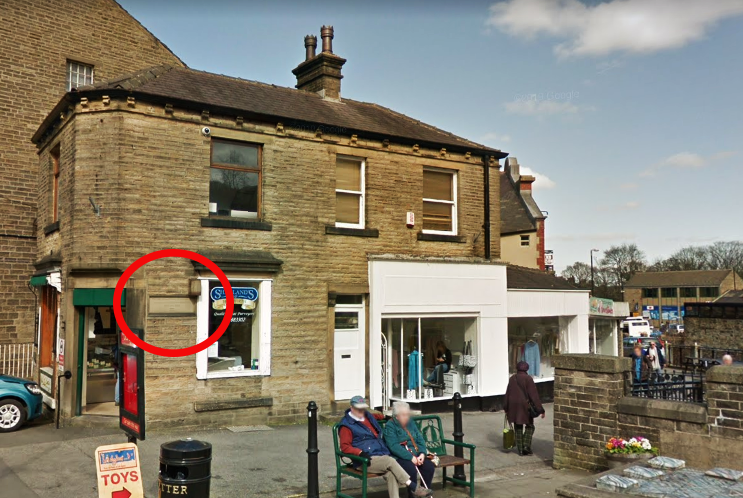
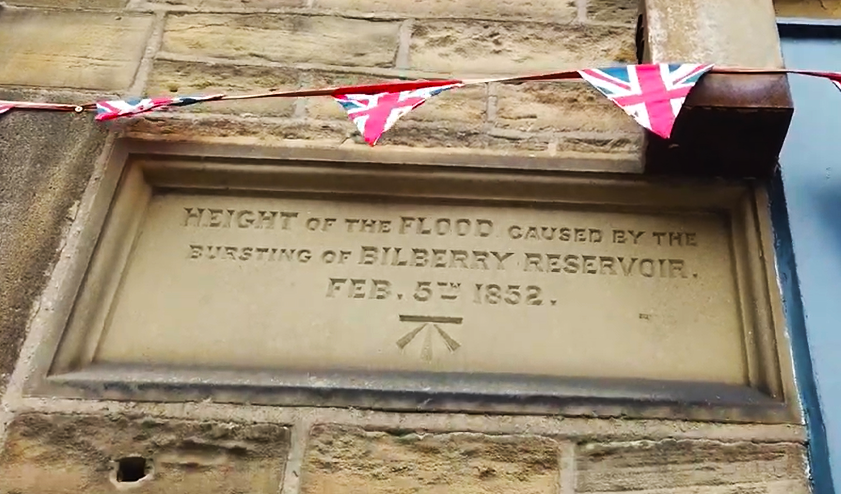
The disaster that took place during the early hours of 5th February 1852 saw a total of four mills completely destroyed with a further seventeen more seriously damaged. Ten dye-houses had been destroyed with another five badly damaged.
Twenty-seven cottages, six bridges, ten warehouses, seven shops and eight barns and stables had also been lost in the flood with a further one-hundred and twenty nine cottages being seriously or badly damaged.
And whilst the recorded total number of deaths has been placed at eighty-one, it seems a plausable guess that this number may in fact be well short of the final figure as some people would die, as already mentioned, from the after effects of the flood due to typhus that soon spread within the Burnlee and Hincliffe Mill areas.
Sources used in this story;
Manchester Courier and Lancashire General Advertiser – Saturday 07 February 1852
Norfolk News – Tuesday 10 February 1852
Leeds Intelligencer – Saturday 28 February 1852
Illustrated London News – Saturday 14 February 1852
+ Huddersfield Exposed – https://huddersfield.exposed/wiki/Holmfirth_Flood_of_1852
+ many more courtesy of the British Newspaper Archive – www.britishnewspaperarchive.co.uk and www.ancestry.co.uk
Please follow me on social media;
Twitter – https://twitter.com/dohpods
Instagram – www.instagram.com/dohpods
Youtube – https://www.youtube.com/c/DaysofHorrorPodcast
Music;
Casual Desire – Ugonna Onyekwe – No Copyright Music
Contact – The Tower of Light – No Copyright Music
Hold On – Myuu – No Copyright Music

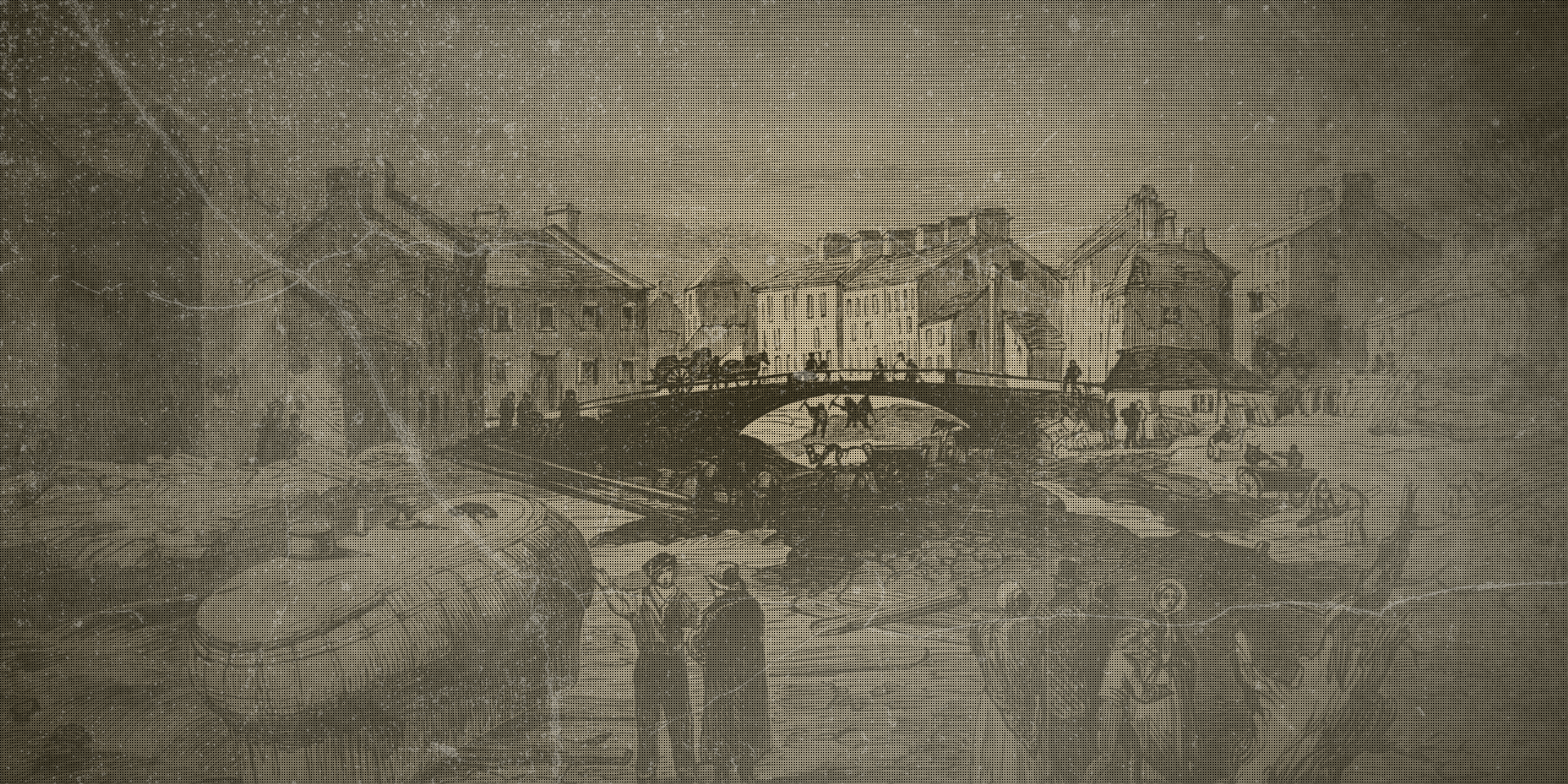
Leave a Reply